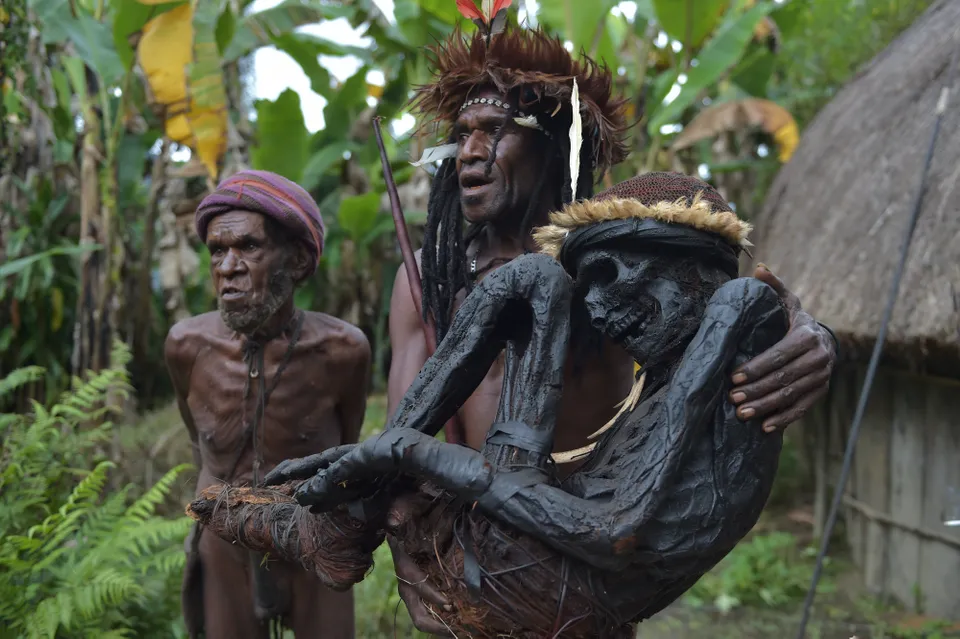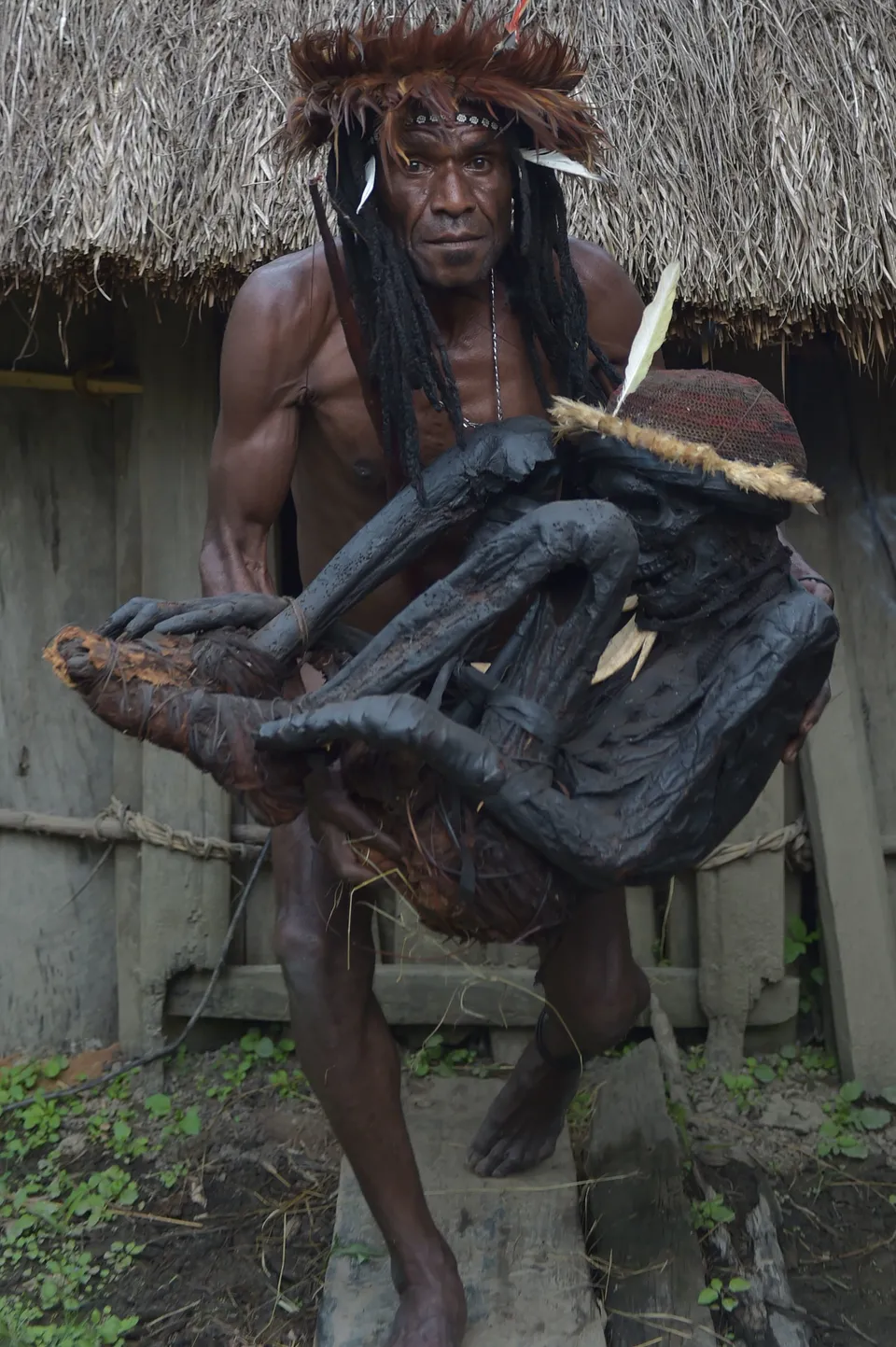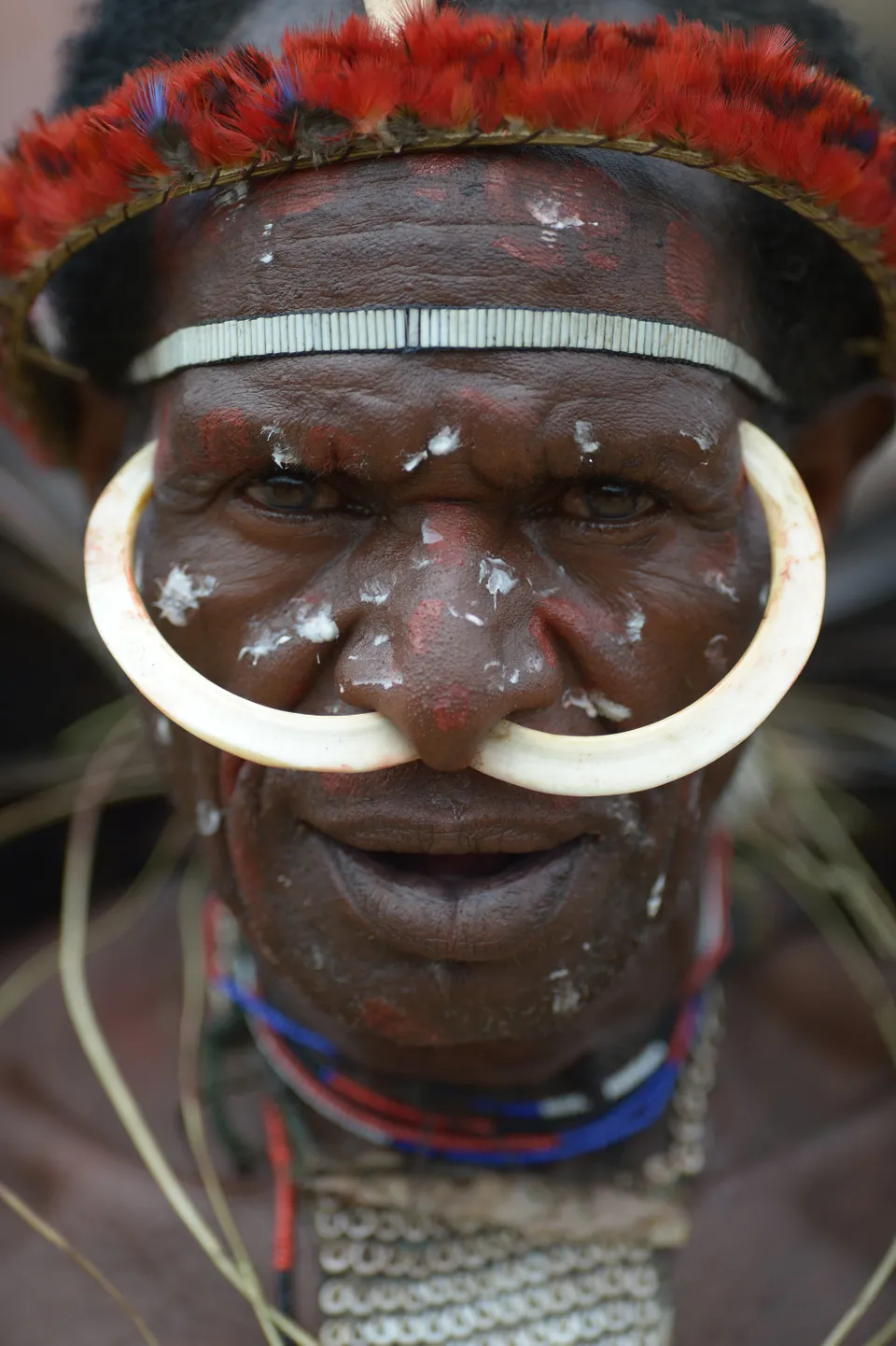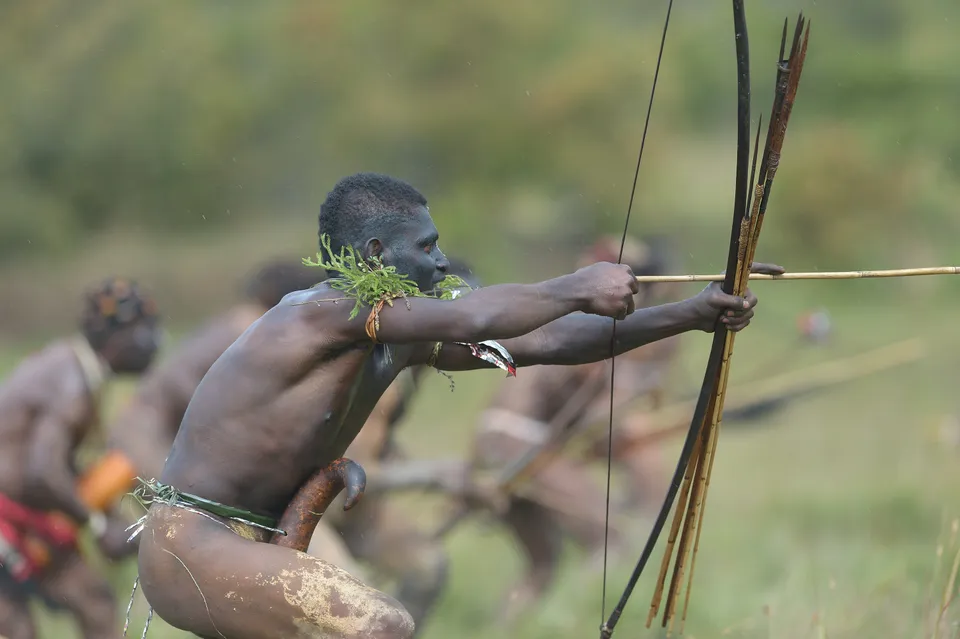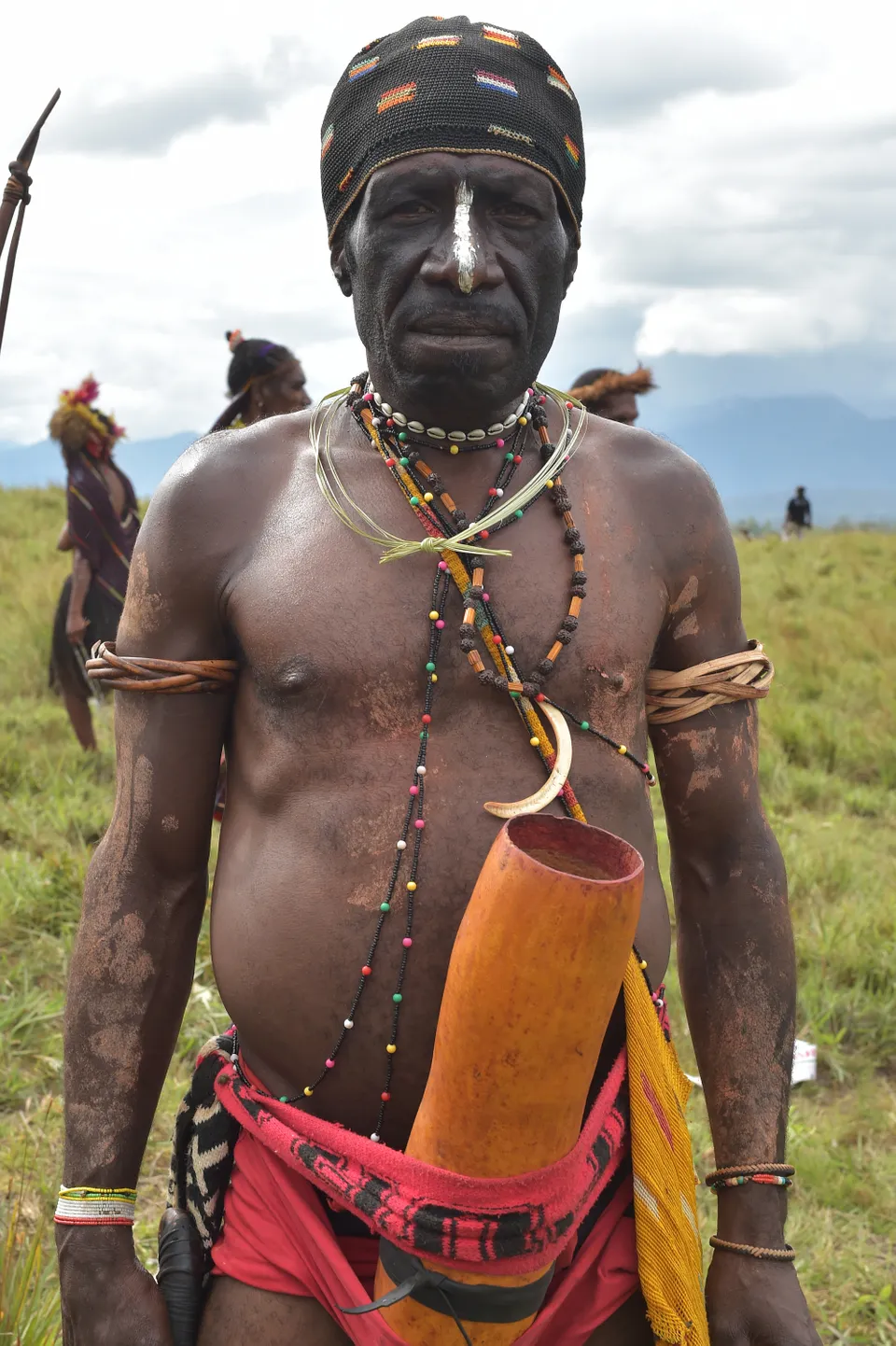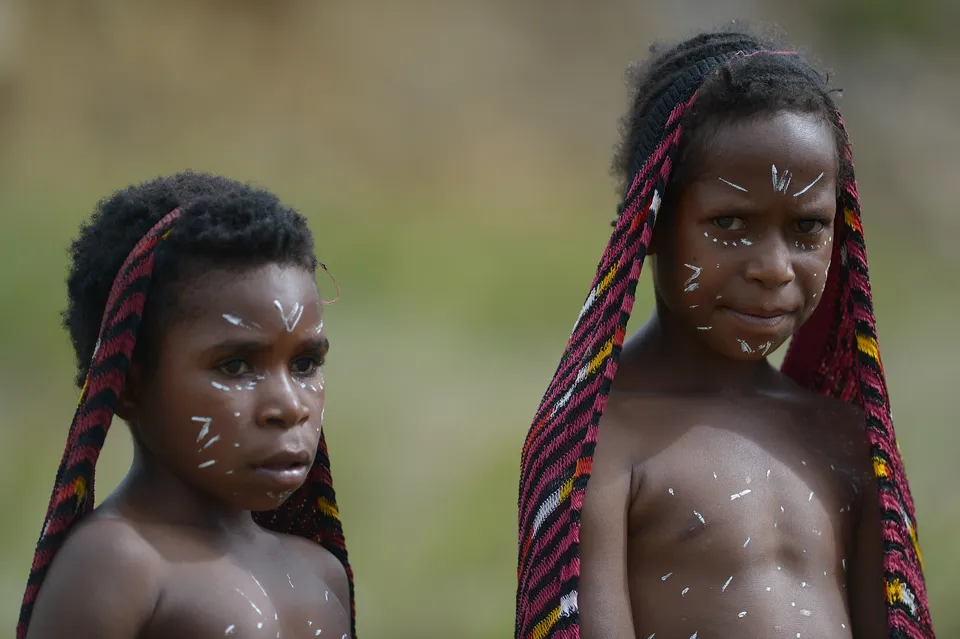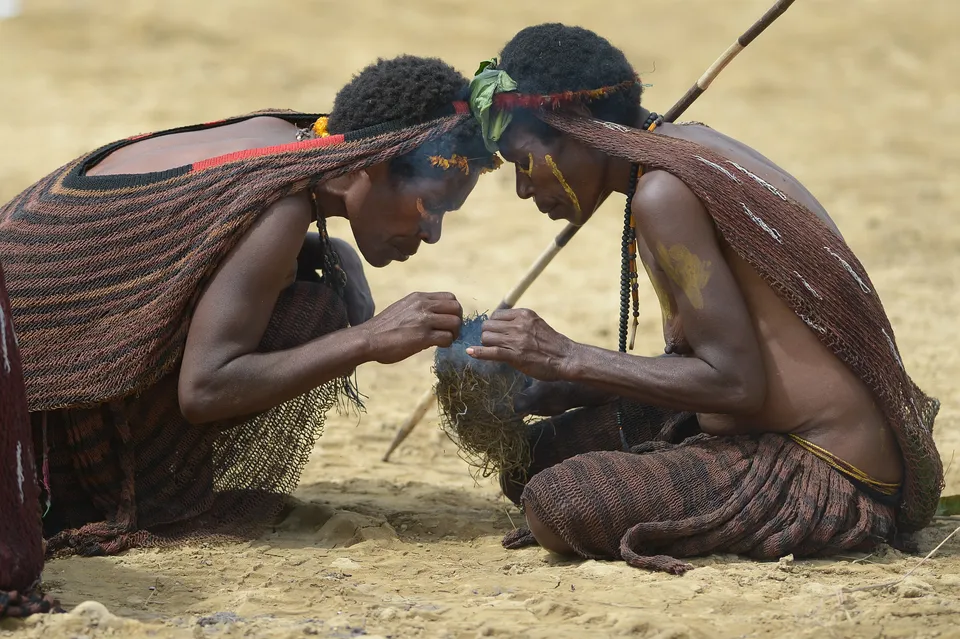How would you like to spend the night with the mummified remains of a long-dead relative?
How would you like to spend the night with the mummified remains of a long-dead relative?
What sounds like a scene from some schlocky horror flick is part of real life for a tribal leader in Wogi, a remote village in the Indonesian province of Papua.
Eli Mabel of the Dani tribe (see more remarkable photos below) spends many nights in the hut where the mummy is kept to make sure nothing happens to it, he told Agence France-Presse.
In protecting the blackened mummy ― said to be the remains of an ancestor of his who ruled some 250 years ago ― Mabel aims to preserve the old Dani tradition of mummification, in which the bodies of venerated tribespeople were preserved with smoke after death.
“We must protect our culture, including the ceremonies for the mummy, the way we treat it, and maintain and fire for it,” Mabel told AFP.
The mummy is decorated with feathers, pig tusks and a traditional gourd covering for the penis. A fire is kept burning in the hut, which is known as a “honai.”
To mummify the bodies, the Dani people dried them under the sun and then stashed them in a cave, Dr. Semiarto Aji Purwanto, a lecturer in anthropology at the University of Indonesia and an expert on Dani culture, told The Huffington Post in an email. Next, he said, the remains were exposed to hot smoke, drained of liquified fat through piercings and slathered with lard. The entire process took months.
Why go to all that trouble?
“By keeping their bodies, [the Dani] believed to have [the] blessing from the ancestor so they can be more prosperous,” Purwanto said, adding that all of the Dani mummies are curled up “like a fetus when in the womb.”
Mummification was once common among the Dani but died out after Christian missionaries who came to the area 30 to 50 years ago encouraged them to bury rather than mummify their dead, Purwanto said, adding that only six or seven mummies are left.
But mummies never die.
This photo, taken on Aug. 7, 2016, shows chief Eli Mabel with the mummified remains of his ancestor Agat Mamete Mabel outside a traditional house in the village of Wogi in Wamena, the long-isolated home of the Dani tribe high in the Papuan central highlands.
The Dani people no longer practice mummification, but tribespeople keep a number of mummies, some a few hundred years old, as a symbol of respect to their ancestors.
The mummy is curled up like a fetus, like all mummies in the Dani tradition.
A Dani man in Wamena on Aug. 8, 2016. The man was participating in the 27th Baliem Valley Festival, featuring highland tribes of Dani, Yali and Lani in their mock battles as symbol of high spirit and power that have been practiced for generations. The festival was held from Aug. 8 – 10.
This Aug. 9, 2016, photo shows a Dani man participating in the festival.
Another participant in the festival. The photo was taken on Aug. 9, 2016.
This photo, taken on Aug. 9, 2016, shows Dani children participating the festival.
In this photo, taken on Aug. 8, 2016, Dani women participate in the festival.
Hits: 6
